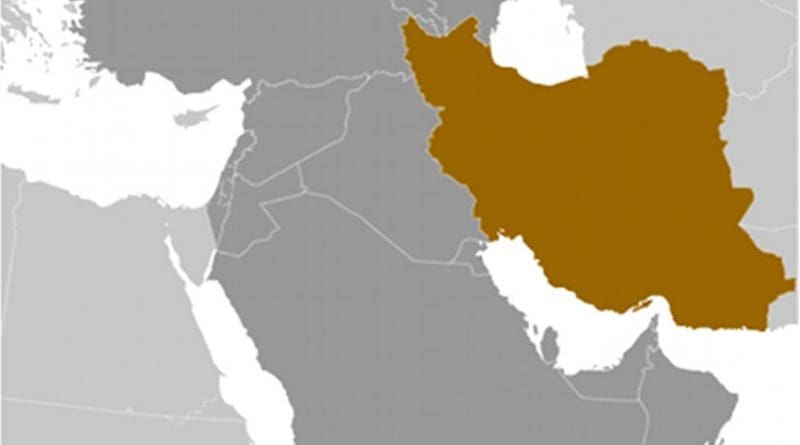Iran’s Climb-Down: The Quixotic Backdrop – Analysis
By IPCS
By Abhijit Iyer-Mitra
Iran’s seemingly conciliatory offer of allowing the UN “full inspection” of nuclear facilities came out of the blue. Almost immediately opinions from the west dubbed this a “delaying tactic”; and some other analysts claimed that this is proof that UN sanctions have begun to pinch and panic has set in. The assertion that Iran’s climb-down is a delaying tactic is ludicrous since the question arises – delaying against what? Military action doesn’t seem imminent and international pressure outside of sanctions seems muted. The economic argument similarly is nothing new since the Iranian economy has been in the doldrums for a long time and has learnt to deal/circumvent these. Analyzing some seemingly unrelated quixotic moves coming out of Tehran may on the other hand provide some clues as to what is happening.
What are these quixotic moves? To begin with Iran decided to haul Russia, its main arms supplier and prime defender against harsher sanctions to International arbitration over the non-supply of the previously contracted S-300 missile systems. And if that was not enough on 8 September, President Ahmadinejad decided to openly call for its closest ally – the Assad regime – to end its crackdown on Syria’s opposition. Curiouser and curiouser?
Hauling Russia to arbitration and rhetorically stabbing its closest ally – Syria, in the back both bear the Ahmadinejad stamp of approval. The enormity of this action should not be underestimated. Russia is possibly the only buffer Iran has against both military action and harsher sanctions. Bilaterally for now, all the cards are in Russia’s hands, be it the construction or refuelling of the Bushehr reactor, shielding Iran from harsher sanctions and possibly in the future vetoing any resolution calling for the use of force against Iran. Once Iran’s nuclear weapons begin to come online however, the equation changes, since nuclear deterrence is a far more persuasive tool against military action than any UNSC veto. Similarly Syria is known to be Iran’s foremost ally not just In controlling Hezbollah, making Iran’s “Shia Arc” dreams come true, but also in engaging in sanctions busting – especially military equipment. Antagonizing both these countries then is an inexcusable self goal for a country that feels vulnerable and isolated. Knowing full well that Iran’s list of friends is small, and its propensity to bargain or manoeuvre next to non-existent without said allies’ cooperation, the president has still chosen to go ahead with the pointless antagonization of these allies. So what is Ahmadinejad up to?
Ever since Ahmadinejad was cut to size by Khamenei earlier this year, he’s been smarting for some form of revenge against the good Ayatollah. Since he is barred by term limits from contesting the next presidential election, and is well aware of the political irrelevance reserved for past presidents this may very well be Ahmadinejad’s stab at a scorched earth policy – effectively eroding the value of Iranian diplomatic assets to leave a poisoned chalice behind for his successor – and destroy Khamenei who has carefully insulated himself and the clergy from accountability. Yes the clergy can prevent the president from doing anything constructive, but evidently they cannot prevent him from being destructive. So what is Ahmadinejad’s end game?
Antagonizing Russia – if Ahmadinejad pursues to its logical conclusion – would kill two birds with one stone. It would remove Iran’s short term security insurance (Russian military and diplomatic aid) and significantly harm Iran’s long term insurance (Russian nuclear technology and fuel – so critical to Iran’s bomb effort). Should the bridge to Syria be burnt, decades worth of effort that has gone into making Hezbollah a potent tool of Iranian foreign policy would go down the drain, but also close of Iran’s last supply route for weaponry and essentials. A weakened Assad therefore is a catastrophe for Iran. While the genesis of the rupee-for-oil agreement is hard to determine if this was an Ahmadinejad initiative, it marks a rather dangerous precedent for Iran’s prime source of revenue. While the rupee is relatively stable, other countries that leverage this agreement in their own deals with Iran may not have stable currencies or strong economies. The net result being that along with destroying Iran’s most important alliances it may well be that Ahmadinejad has also laid the grounds for destroying any hope of future economic stability.
Khamenei is most probably scared – very scared. The “desperation” and “panic” western analysts speak of is true, but it is not Iran’s panic, but rather Khamenei’s panic – panic at seeing his tools of deniability, slipping away from him. The question to ask then is should Iran’s offer be taken up or not? Resoundingly yes! Whether it stalls Iran’s nuclearization or not it will gather ground intelligence for possible use in airstrikes later, but more importantly, it will force Ahmadinejad to accelerate his efforts to bring down the Ayatollahs, and possibly set in place actions that will achieve far more than any jasmine revolution or airstrike could.
Abhijit Iyer-Mitra
Research Officer, IPCS
email: [email protected]

